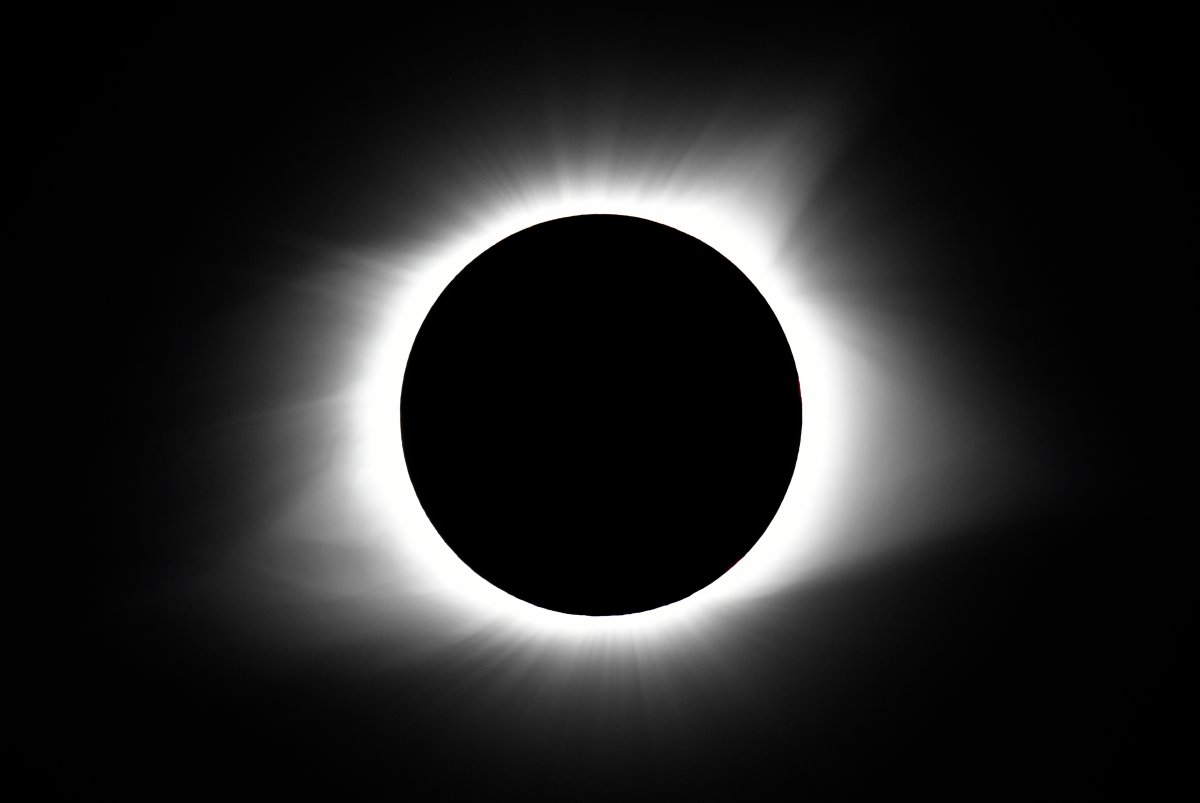Canadians are gearing up for today’s total solar eclipse that could be a once-in-a-lifetime experience for many.

Preparations are underway in cities and towns that fall in the path of totality as visitors across the country plan to catch a glimpse of the rare celestial event.
Several schools in Ontario and Quebec are closed on April 8, while some people are taking a day off from work.
Meanwhile, the Niagara Region, which is expecting thousands of visitors, has declared a state of emergency “out of an abundance of caution.”

Here are some of the most popular questions people have been asking on Google about the solar eclipse.
What is a solar eclipse?
A solar eclipse occurs when the moon comes between the Earth and the sun, casting a shadow on Earth, according to the Canadian Space Agency.
A total solar eclipse is when the moon perfectly aligns with the Earth and sun, completely blocking the sunlight and causing darkness for some time.
In a partial solar eclipse, the moon blocks only part of the sun as they’re not perfectly aligned.
But any eclipse will start and end as a partial eclipse when the sun is not hidden in totality.
How common is a solar eclipse?
Toronto-based planetary scientist Sara Mazrouei said solar eclipses happen once every six months or so.
According to NASA, between two to five solar eclipses of some kind – partial, annular or total – are seen from Earth in a year.
Meanwhile, a total solar eclipse is visible once roughly every 18 months or once every one to two years from somewhere on Earth.
For a given location this can be a very rare occurrence coming after a gap of centuries.
The last time the path of a total solar eclipse crossed Canada was in 1979.

What time is the solar eclipse?
On April 8, the solar eclipse’s path of totality will pass through parts of Ontario, Quebec, New Brunswick, Prince Edward Island, Nova Scotia, and Newfoundland and Labrador.
Cities and towns outside the path of totality but nearby will see a partial solar eclipse.
Depending on your location, the solar eclipse will take place in the afternoon or early evening.
In Canada, the start time of the total solar eclipse is 3:12 p.m. ET and the path of totality ends at 4:16 p.m. ET, according to timeanddate.com
A partial eclipse will be visible in the country between 1:40 p.m. ET and 5:18 p.m. ET.
How long will the solar eclipse last?
While the partial eclipse for a given location will be roughly one to three hours long, the time to catch the total eclipse is much shorter – lasting only a few seconds to about three minutes.
Here is a list of all the start and end times for different cities and towns in Canada.
How can you look at a solar eclipse?
People watching an eclipse should be wearing special glasses that meet the safety requirements of the ISO 12312-2 international standard.
Regular sunglasses should not be worn while looking at the eclipse, experts say.
If you’re worried about directly looking at the eclipse, you can also view it indirectly through a pinhole projector.
Read more here about the precautions you should take.

Can the solar eclipse blind you?
Looking directly at the sun without proper protection can lead to serious problems, such as partial or complete loss of eyesight, the Canadian Space Agency warns.
Precautions should be taken during an eclipse even when it appears there is hardly any sun peeking past the moon.
Samir Jabbour, an ophthalmologist and cornea specialist in Montreal told Global News in a recent interview that “damage can be done quite quickly just by looking at the sun for a few seconds and symptoms can start occurring within a couple weeks after the damage has occurred.”
Which eclipse glasses are safe to use?
Warnings about counterfeit and fake eclipse glasses have been popping up.
The American Astronomical Society has a list of vetted suppliers, including several authorized dealers in Canada from where you can get your eclipse eyewear.
Even counterfeit or fake eclipse glasses and other solar viewers can be labeled as ISO-compliant without being properly tested for safety, experts say.
If you’re not sure, read more here to help you spot fakes.

Will the eclipse damage your phone or camera?
Yes.
The lens of your phone or camera as well as your eyes concentrates sunlight into one spot and that can cause damage, Mazrouei said.
“You should use special eclipse or solar filters for your phone and camera,” she told Global News in an email.
When is the next solar eclipse in Canada?
After this year, the next time a total solar eclipse will be visible from Canadian soil will be in 2044, when the path of totality will pass through British Columbia, Alberta, Saskatchewan, Yukon, Northwest Territories and Nunavut.
The three territories will also get to witness an annular solar eclipse in 2039 and Eastern Canada will get a partial one in 2025.
An annular solar eclipse happens when the moon is at or near its farthest point from Earth, according to NASA.

What is a lunar eclipse?
A lunar eclipse occurs when there is a full moon and the Earth is positioned between the moon and sun, blocking sunlight from reaching the moon’s surface.
A partial lunar eclipse will be visible across Canada from September 17 to 18, 2024.







Comments